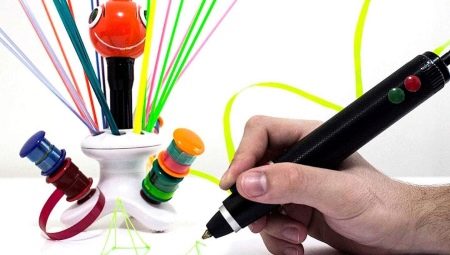How to clean plastic from a 3D pen?

3D pens are unique tools that can be used to draw any volumetric object. But, like other devices, they are prone to breakage. Sooner or later, even the highest quality devices break down. In most cases, breakdowns are associated with plastic jams. How to fix this problem, we will analyze below.


Required tools
To clean the device, an ordinary user does not need many tools. So, first you need to prepare the workplace, covering it with newspapers or paper, so as not to spoil the furniture. Further, it is recommended to set up good bright lighting, allowing you to see every little detail. Finally, prepare your tools.
The nozzle size of a 3D pen is generally small. Usually it is 0.6 mm, sometimes 0.7. The easiest way to get into such a small hole is to get a guitar string.... The thickness you need is 0.33 mm. Such a string will easily pass into the nozzle.
However, professional pen users prefer a more reliable tool.


This is a special drill designed specifically for this type of tool. It allows you to clean the nozzle without deforming it. You can buy such a drill at the points of sale of the pens themselves and in many online stores. Its diameter should be 0.5 mm. If you don't have a string or drill at hand, any long, thin object of the required diameter will do. A screwdriver is also useful for disassembly.


Disassembly and cleaning
Repairing a 3D pen is not difficult, even for inexperienced users. Let's consider step by step what to do if the fixture is clogged with plastic.
- On devices working with plastic, there is always a button for its reverse feed. You need to press on it, and then use your finger or a string to try to pull out the fishing line. It is recommended to warm up the device before carrying out the procedure.
- After removing the plastic line, inspect it carefully. It so happens that the tip is slightly melted. Cut this piece with scissors and try using the device. In most cases, this is enough.


If the problem persists and the pen refuses to work, follow the instructions below.
- De-energize the handle by disconnecting it from the power supply.
- Unscrew the screws with a screwdriver and open the device case.
- Inside, you will immediately see a thin plastic tube through which the plastic comes out. It is easy to pull it out thanks to its flexibility.
- The plastic tube may be clogged. It can become clogged with plastic or dust. It is very easy to clean it using a string or drill.
- If the rod does not show signs of dirt, you will have to pay attention to the nozzle, which can also be clogged. The solution to the problem is to heat the pen, and then remove the remaining plastic using the tools described above.
- After you've cleaned everything up, it's time to assemble the pen and turn it on. The plastic jam problem should be resolved.


Experienced users know to pull out the filament (fishing line) after each use of the 3D pen.
But sometimes you can forget about it, or the line slips inside and can get stuck in the rod. To remove it, you will also have to disassemble the handle.
Disconnect the device, open it. Then remove the plastic tube. Turn on the handle again and wait for it to warm up. This will soften the thread and make it easy to reach. But it is important to do this not immediately after heating, since the temperature of the handle parts is very high, you can get burned. The cleaned handle is assembled in the reverse order, after having been disconnected from the mains.
Important: if the 3D pen does not work after all the perfect manipulations, then it is better to contact the service center for help. Perhaps the motor is broken or the board is burned out. Only specialists should deal with such problems. The average user will most likely just break the device while trying to repair it themselves.

Useful Tips
There are a number of helpful tips to help novice users get the handle right:
- temperature indicators and filament feed rate should depend on the quality properties of the plastic;
- when repairing the device, do not try to clean its nozzle with objects of a larger diameter than recommended, or with a sewing needle (the structure may crack);
- so that the fishing line does not get pulled into the device, you need to regularly check the condition of the reel on which it is wound;
- to work with the handle, only those materials are taken that are recommended by the manufacturer specifically for this model;
- after work, be sure to pull out the plastic thread, otherwise you will have to disassemble the handle.






